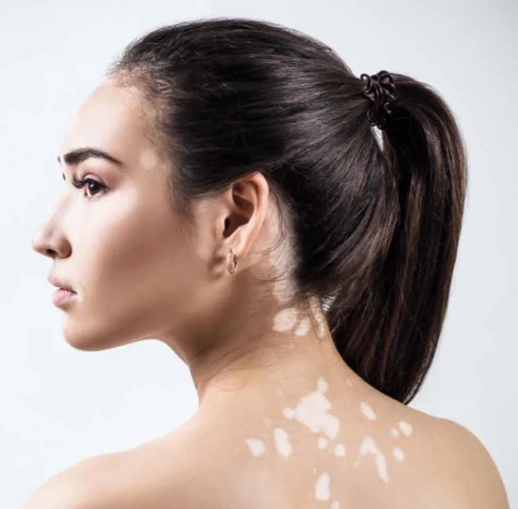Healing Leucoderma with Ayurveda: Natural Remedies for Skin Restoration
Leucoderma, commonly known as Vitiligo, is a skin disorder characterized by the loss of pigment-producing cells (melanocytes), resulting in white patches on the skin. These patches can appear anywhere on the body and may gradually enlarge over time. The exact cause of vitiligo is not fully understood, but it is believed to involve autoimmune, genetic, and environmental factors. Treatment options for vitiligo include topical corticosteroids, phototherapy, depigmentation therapy, and surgical procedures like skin grafting.
Causes: Leucoderma, commonly known as Vitiligo, is a chronic skin condition characterized by the loss of melanocytes, the pigment-producing cells in the skin. The exact cause of vitiligo is not fully understood, but it is believed to involve a combination of genetic, autoimmune, neural, and environmental factors. Autoimmune factors play a significant role, where the immune system mistakenly attacks and destroys melanocytes. Genetic predisposition is also a contributing factor, as vitiligo tends to run in families. Environmental triggers such as oxidative stress, trauma to the skin, sunburns, and exposure to certain chemicals may exacerbate or trigger vitiligo in susceptible individuals.
Symptoms: The primary symptom of vitiligo is the presence of depigmented, or white, patches on the skin. These patches may appear anywhere on the body, including the face, hands, arms, feet, and genital area. The patches may start small and gradually enlarge over time, with irregular borders. Vitiligo can also affect mucous membranes and areas with hair follicles, such as the scalp, eyebrows, and eyelashes. In some cases, individuals with vitiligo may experience premature graying of hair on the scalp, eyebrows, eyelashes, and other body hair.

Types
Vitiligo is classified into different types based on the pattern and distribution of depigmented patches:
Non-Segmental Vitiligo
The most common type, characterized by symmetrical, bilateral depigmentation that often affects both sides of the body simultaneously. Non-segmental vitiligo may occur on any part of the body, including the face, hands, arms, feet, and trunk.
Segmental Vitiligo
Less common than non-segmental vitiligo, segmental vitiligo is characterized by unilateral depigmentation that typically affects one side of the body or a specific segment or dermatome. Segmental vitiligo tends to develop at a younger age and may stabilize after a certain period of time.
Mixed Vitiligo
Some individuals may exhibit features of both non-segmental and segmental vitiligo, with depigmented patches appearing in both symmetrical and asymmetrical patterns.
Topical Treatments
Topical corticosteroids, calcineurin inhibitors, vitamin D analogs, and topical psoralen plus UVA (PUVA) therapy applied directly to the affected skin to promote repigmentation.
Phototherapy
Exposure to ultraviolet (UV) light under medical supervision, either with narrowband UVB phototherapy or PUVA therapy, to stimulate melanocyte activity and repigmentation.
Systemic Medications
Oral medications like corticosteroids, calcineurin inhibitors, and immunomodulators may be prescribed for widespread or resistant cases of vitiligo.
Treatment: While there is no cure for vitiligo, various treatment options can help manage symptoms, promote repigmentation, and improve the appearance of depigmented patches. Treatment approaches may include:
Conclusion: Vitiligo is a chronic skin condition that can significantly impact an individual's physical appearance and psychological well-being. While vitiligo is not contagious or life-threatening, it can cause distress and stigma, leading to emotional and social challenges. Early diagnosis and intervention are crucial in effectively managing vitiligo and promoting repigmentation. By working with dermatologists or healthcare professionals, individuals with vitiligo can explore treatment options tailored to their specific needs and goals, ultimately improving their quality of life and self-esteem.